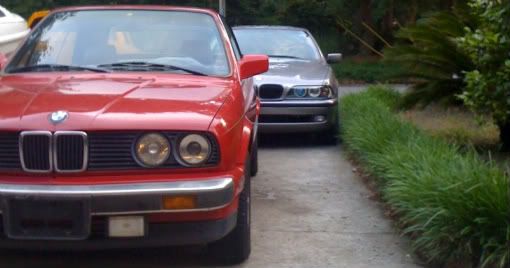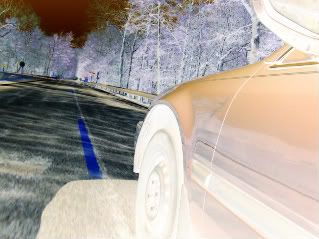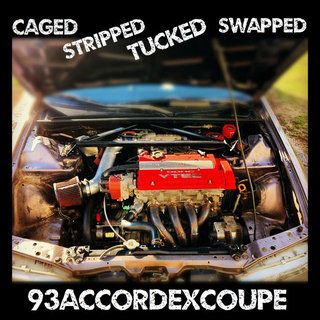
Announcement
Collapse
No announcement yet.
Move over Plane on a Treadmill there's a New Sheriff in Town
Collapse
X
-
I am thinking that it would still take off.
The blades on a helicopter are pitched (slight slant to them). The slant to the blade (pitch) is what generates downforce for the helicopter to "lift" into the air.
My question is, What will happen with the tail rotor? It's job is to stabalize the helicopter in flight.
So, if entire thing is spinning (helicopter), wouldn't it spin off in some direction once it "lifted" due to it not being stable? Or would the tail rotor just "snap off" sort of speak due to the force of it trying to stabilize the aircraft while it is spinning?

This should an interesting answer/discussion.
EDIT: Helicopters also have a turbine to help propel it forward. I am curious as to how this would draw into this equation also.
I guess I am also going to have to wait for owequitit's reply.Last edited by Father Time; 01-31-2008, 07:17 PM.3 CB's gone....
1 WK Overland....
Still miss the CB though......maybe one day.
Comment
-
Wow, talking about gyroscopic effects, this is off the scales
+1 rep for npor

Click sig to view MR thread
Links to other rides:
Honda Accord Euro-R
Honda Odyssey Absolute
Honda City I-DSi
Honda Stream
Comment
-
I don't think it would.
It would depend on how fast the turntable was spinning, but it wouldn't take very much before it was hard to control after liftoff, or the airframe came apart due to structural loads imposed on it.
This is VERY different from the airplane example. In that example, none of the loads of the treadmill were imposed on the airplane, because the airplane was moving in one straight direction, and the treadmill had no affect on the acceleration.
Here, the helicopter would have to be spinning with the turntable, which would not only cause the helicopter to spin, it would also impose great loads on the airframe. It would probably result in disaster. I tried it once when I was a kid with a small helicopter, and it didn't end pleasantly for those on board.
Comment
-
We wanted a wall of text. You have let us all down.Originally posted by owequititI don't think it would.
It would depend on how fast the turntable was spinning, but it wouldn't take very much before it was hard to control after liftoff, or the airframe came apart due to structural loads imposed on it.
This is VERY different from the airplane example. In that example, none of the loads of the treadmill were imposed on the airplane, because the airplane was moving in one straight direction, and the treadmill had no affect on the acceleration.
Here, the helicopter would have to be spinning with the turntable, which would not only cause the helicopter to spin, it would also impose great loads on the airframe. It would probably result in disaster. I tried it once when I was a kid with a small helicopter, and it didn't end pleasantly for those on board.
 "This truck is 100% sh*ts and giggles."
"This truck is 100% sh*ts and giggles."
"Speed has never killed anyone. Suddenly becoming stationary... that's what gets you." Jeremy Clarkson

You're not JDM until you have a car built in ohio with tons of bolt ons from ebay.
Disregard females, acquire currency
BUS 62 AIN'T F'ING AROUND!
Comment
-
Helicopters do not have "thrust" that contributes a major amount of motion from the engines. It is residual thrust, and incremental in pretty much all cases. The main purpose of the engines on a helicopter is to turn the rotors (main and tail, which are often connected via a driveshaft).Originally posted by 91Accord-LXI am thinking that it would still take off.
The blades on a helicopter are pitched (slight slant to them). The slant to the blade (pitch) is what generates downforce for the helicopter to "lift" into the air.
My question is, What will happen with the tail rotor? It's job is to stabalize the helicopter in flight.
So, if entire thing is spinning (helicopter), wouldn't it spin off in some direction once it "lifted" due to it not being stable? Or would the tail rotor just "snap off" sort of speak due to the force of it trying to stabilize the aircraft while it is spinning?

This should an interesting answer/discussion.
EDIT: Helicopters also have a turbine to help propel it forward. I am curious as to how this would draw into this equation also.
I guess I am also going to have to wait for owequitit's reply.
The main foward thrust for a helicopter comes from manipulating the angle of attack of the rotor blades.
Here is a less complicated version of what I was trying to explain:
http://www.centennialofflight.gov/es...pitch/DI39.htm
How they work overall:
http://travel.howstuffworks.com/helicopter.htm
Comment








Comment